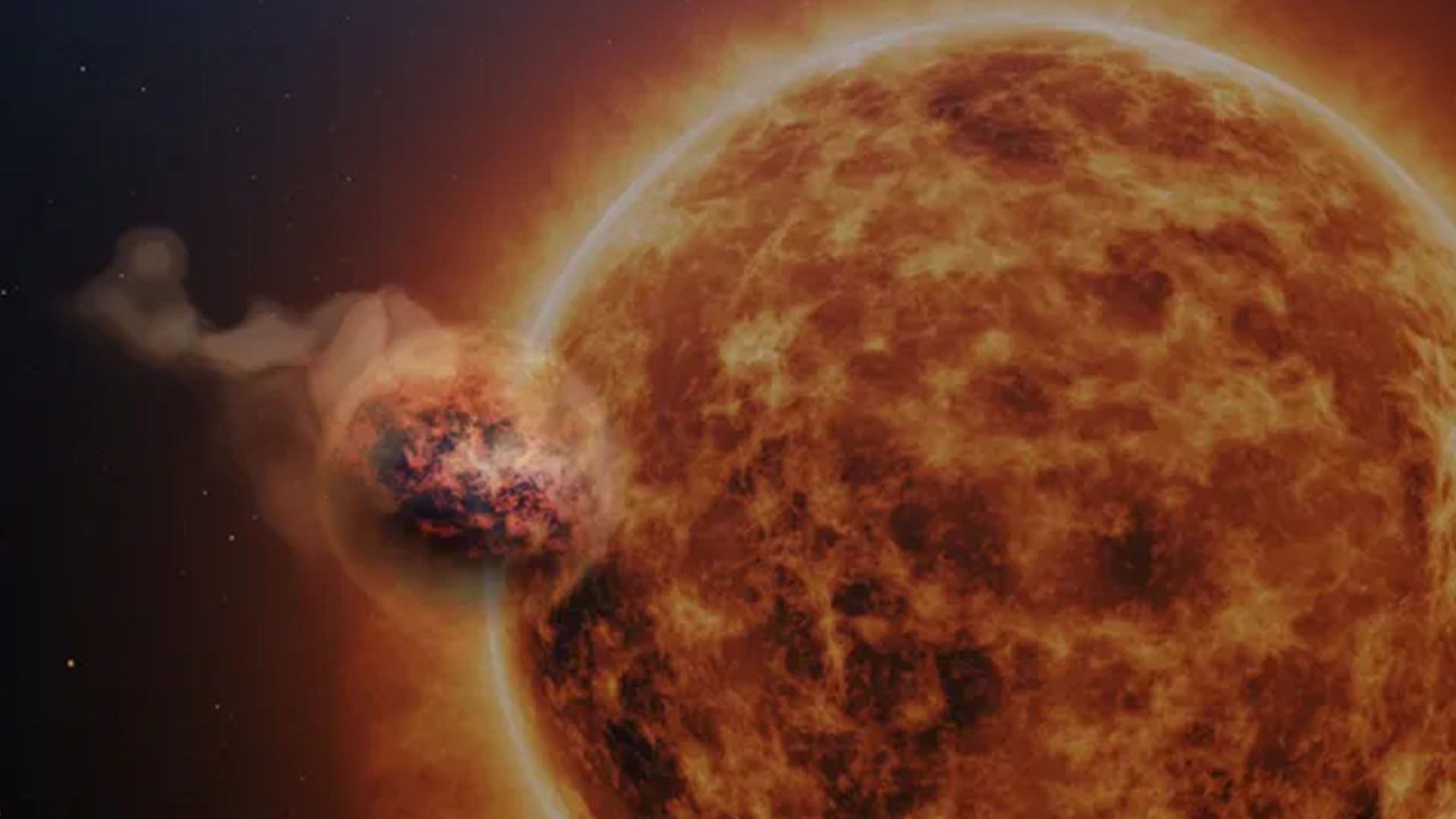James Webb telescope detects 'fluffy' alien planet that rains sand
Clouds of silicate sand exist high in exoplanet WASP-107b's atmosphere, new James Webb Space Telescope observations reveal.

An exoplanet hosts strange, sandy clouds high in its atmosphere, a new study reveals.
While the James Webb Space Telescope (JWST) may spend a lot of its time observing the farthest reaches of the early universe when galaxies were only just starting to form, it also spends plenty of its time focused on objects a lot closer to home — such as the atmospheres of exoplanets in our galactic neighborhood.
A team of European astronomers used observations from the JWST to detail the atmospheric composition of a nearby "fluffy" exoplanet, called WASP-107b. Researchers found water vapor, sulfur dioxide and even silicate sand clouds residing within the exoplanet's dynamic atmosphere. The new study may also have implications for our understanding of the chemistry of distant planets.
The exoplanet WASP-107b is one of the lowest density planets known to astronomers, sometimes being likened to a comet. The planet is roughly the same size as Jupiter, but with only 12% of its mass. WASP-107b sits roughly 200 light years from Earth, and takes only six days to orbit its home star, which is slightly cooler and less massive than our sun.
The planet's low density, or fluffiness, allowed astronomers to look 50 times deeper into the atmosphere of the planet compared to observations achieved for more dense planets, like Jupiter.
RELATED: James Webb telescope finds an 'extreme' glow coming from 90% of the universe's earliest galaxies
The initial discovery of sulfur dioxide (the smell released when you light a match) surprised astronomers. This is because WASP-107b's host star emits a relatively small fraction of high-energy light photons, due to the planet being smaller and cooler. The planet's low density, however, means these photons can penetrate deep into WASP-107b's atmosphere, causing the chemical reactions that create sulfur dioxide.
Get the world’s most fascinating discoveries delivered straight to your inbox.
Aside from the sulfur dioxide, astronomers also noted the presence of high-altitude clouds composed of fine silicate particles — basically, really fine-grained sand.
Researchers suppose the sand clouds form in a similar way to water vapor and clouds on Earth, just with droplets of sand. When the sand rain droplets condense and fall, they encounter very hot layers within the planet, where they become silicate vapor and are moved back up where they recondense to form clouds once again.
"JWST is revolutionizing exoplanet characterisation, providing unprecedented insights at remarkable speed," said lead author Leen Decin of Katholieke Universiteit Leuven in Belgium, in a press release.
"The discovery of clouds of sand, water, and sulfur dioxide on this fluffy exoplanet … is a pivotal milestone. It reshapes our understanding of planetary formation and evolution, shedding new light on our own solar system," he added.
Observations were taken using JWST's Mid-Infrared Instrument (MIRI), a spectrograph which can probe planetary atmospheres in mid-infrared or heat-seeking wavelengths. The paper was published in the journal Nature on Wednesday (Nov. 15).
Originally posted on Space.com.
Conor Feehly is a New Zealand-based science writer. He has earned a master's in science communication from the University of Otago, Dunedin. His writing has appeared in Cosmos Magazine, Discover Magazine and ScienceAlert. His writing largely covers topics relating to neuroscience and psychology, although he also enjoys writing about a number of scientific subjects ranging from astrophysics to archaeology.




